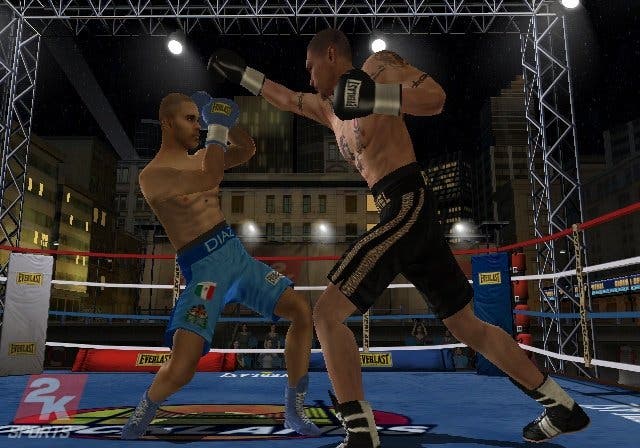Don King Boxing
Ouch.
In 1966, according to Wikipedia - which I've certainly never known to be wrong about anything - Don King stomped an employee to death over a debt of 600 dollars. I mention this only because it makes Don King's Prizefighter the first videogame series I can think of that's endorsed by somebody who's actually killed a man - well, at least since Lesley Grantham's Super-Trick Snowboarding gave us so many hours of fun on the SEGA Megadrive. Still, it feels a little churlish bringing it up, really: King's served his sentence and deserves a second chance. He's done his time, and now, with Don King Boxing, we're doing ours.
When it appeared on the 360 last year, Prizefighter was widely lauded for lacklustre graphics, unwelcome difficulty spikes, and collision detection so bad that you almost felt you were playing a boxing simulation on the Holodeck of the Starship Enterprise. If you're the kind of person who suspects that all this wonky game really needed to snap it into shape was the addition of Wii controls, I should very like to meet you - presumably once you get back from New York City, where you've been optimistically waiting for the Titanic to finally arrive.
Clear your mind and hope for the best, though. Oh dear: things start in a distinctly unpromising manner. After an unconvincing intro sequence with an astonishingly juddery frame rate, you're dumped into an unskippable tutorial, which attempts to introduce you to the game's controls. They're pretty simple really: holding the remote and nunchuk upright, a push forward handles jabs and straights, hooks are activated by a swing to each side, and uppercuts come via a gentle flick. Pushing either B or Z directs blows to the body rather the head, and, with movement handled by the stick, there are further options for guarding, dodging, and accessing the pleasantly unshowy special moves - more powerful variations of each punch, which leave a brief trail of red light lingering behind them.

As move-sets go, it's actually rather elegant - an entirely instinctive range of controls which are easy to memorise and full of punchy promise. Sadly, what the tutorial is really teaching you is that none of this matters much.
Don King Boxing, it turns out, is woefully imprecise. And not just, "I pressed the wrong button in the elevator and now I'm on the wrong floor" imprecise, but, "I set off to drive to the laundrette and somehow ended up in Ukraine" imprecise. While the game can just about distinguish your inputs while it's teaching you each separate attacks one at a time, as soon as you reach the combo stage of the tutorial the frustration jolts into overdrive, with every shake of the remote or nunchuk offering you an entirely unexpected outcome, while the too-subtle variations in the punch animations leave you with little to distinguish between jabs and uppercuts anyway.
That the tutorial asks you to fill in chains of specific moves in order to proceed is bad enough, but throw on top of that a focus on timing, which the game leaves you to discover for yourself - and which the remote can rarely handle anyway - and it becomes clear that the game has managed the impossible: it's found a magical plateau of annoyance where precision and imprecision become inextricably knotted - the game demanding a level of strict control over your inputs while offering you tools which mean you can only achieve them through a mixture of luck and sheer bloody-mindedness.








